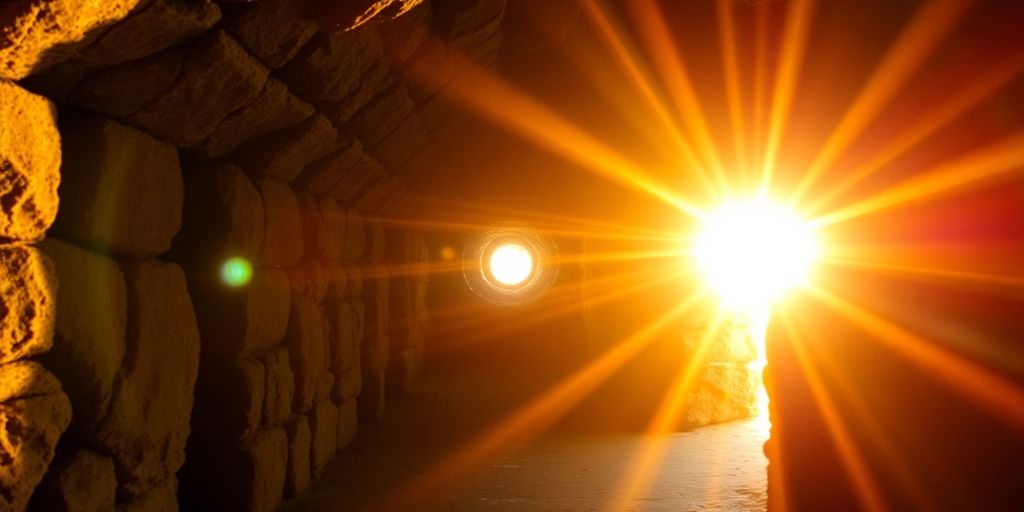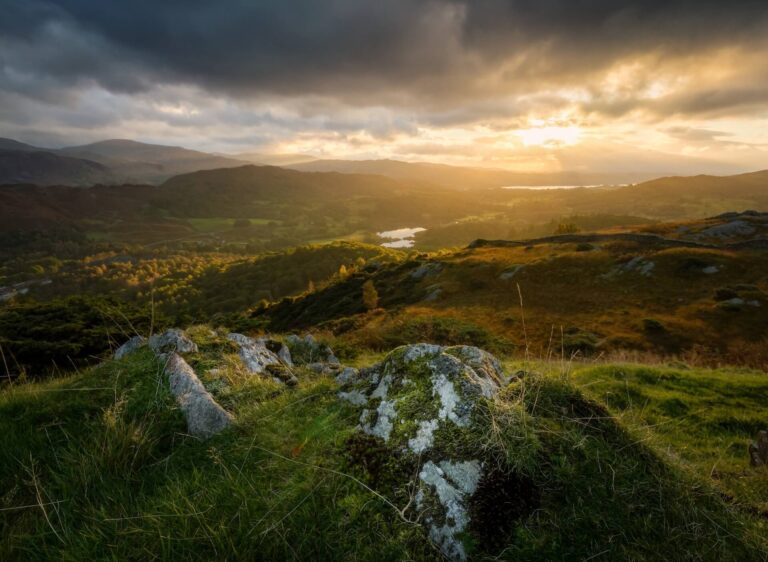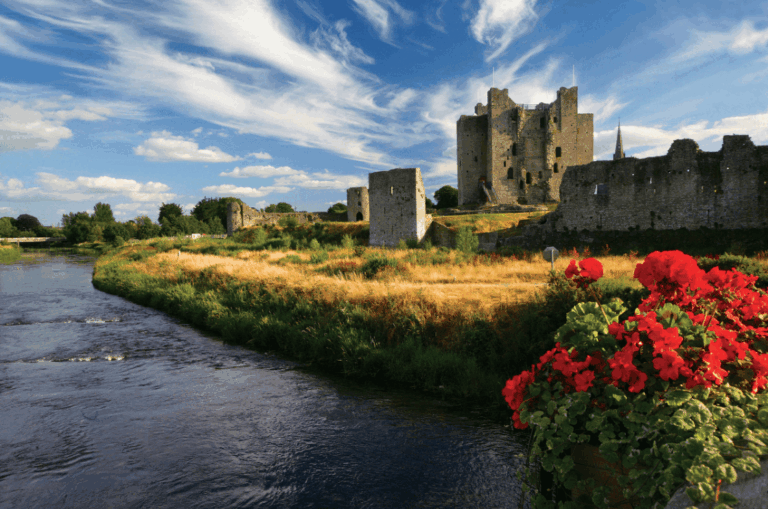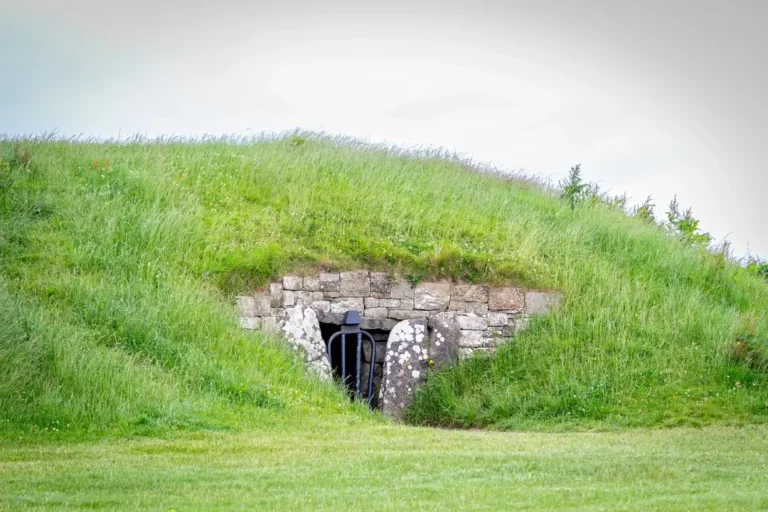Celtic New Year Samhain
The Boyne Valley, a place steeped in ancient history and myth, comes alive each year with Samhain events. This old Celtic festival, which many folks know as the real start of Halloween, is a big deal around here. It’s a time when the gap between our world and the spirit world supposedly gets super thin, making it a perfect moment for traditions that honor the past and look to the future. If you’re looking for something cool to do this autumn, especially if you’re into history and a bit of spooky fun, the Samhain events in Boyne Valley are definitely worth checking out.
Key Takeaways
- Samhain, the ancient Celtic New Year, is the original version of what we now call Halloween.
- The Boyne Valley has a bunch of important historical spots, like Tlachtga and the Hill of Tara, that are key to Samhain celebrations.
- Old Samhain traditions included big bonfires, sharing food, honoring ancestors, and wearing costumes to ward off bad spirits.
- The Púca Festival in the Boyne Valley is a modern way to celebrate Samhain, with lots of music, fire, and storytelling.
- Samhain was a time when people believed the barrier between the living and spirit worlds was at its weakest, making it a time for divination and connecting with the other side.
The Origins of Samhain
Ancient Celtic Roots
Samhain, pronounced “sow-in,” is way more than just a spooky night; it’s got deep roots in ancient Celtic culture. It was a super important time for the Celts, marking a transition. Think of it as a hinge between the bright, plentiful summer and the dark, cold winter. It wasn’t just about the weather changing, though. It was also seen as a time when the boundary between our world and the Otherworld got really thin. I always found that fascinating.
Celtic New Year Samhain
Samhain (pronounced roughly “sow-in” or “sah-win”) is an ancient Celtic festival that marked the Celtic New Year and the transition from the lighter half of the year to the darker half.
Here are the key points to the Celtic New Year Samhain:
-
Time of Year: Celebrated on the night of October 31st into November 1st, midway between the autumn equinox and winter solstice.
-
Seasonal Meaning: It marked the end of the harvest season and the beginning of winter, which was considered the “dark half” of the year in Celtic tradition.
-
Spiritual Beliefs: The Celts believed the boundary between the world of the living and the spirit world grew thin at Samhain. Spirits of ancestors and other supernatural beings were thought to walk among the living.
-
Rituals: People lit bonfires for protection and purification, left offerings of food and drink for spirits, and sometimes wore costumes or masks to ward off harmful entities.
-
Divination: Because of the liminal nature of Samhain, it was also a time for fortune-telling and looking into the future.
-
Modern Legacy: Many traditions of Halloween stem from Samhain—such as costumes, carved lanterns (originally turnips in Ireland and Scotland), and treats left for wandering spirits.
-
Neopagan/Wiccan Practice: Today, Samhain is celebrated as one of the major sabbats in modern Pagan and Wiccan traditions, often honored as a time to remember the dead and reflect on cycles of life and death.
Connection to Halloween Traditions
So, how did Samhain turn into Halloween? Well, it’s a long and winding road, but basically, as Christianity spread, some of the old Celtic traditions got mixed in with new religious practices. All Hallows’ Eve, which later became Halloween, falls on October 31st, the same night as Samhain. The practice of wearing costumes and masks, which was originally done to ward off evil spirits or mimic them, stuck around. And the bonfires and communal feasting? Those are still part of many Halloween celebrations today. It’s pretty cool to see how these ancient customs have survived, even if they’ve changed a bit over time.
Key Samhain Locations in Boyne Valley
The Boyne Valley is steeped in history and mythology, and several locations within it hold particular significance for Samhain celebrations. These sites, rich with ancient energy, offer a tangible connection to the Celtic past and the traditions associated with this important festival.
Tlachtga: Site of the Great Fire Festival
Tlachtga, now known as the Hill of Ward, was the primary location for the Great Fire Festival, marking the beginning of Samhain. This festival involved:
- Lighting a massive bonfire, which served as a beacon across the countryside.
- Performing rituals to honor the gods and ensure a prosperous new year.
- Using the fire for divination and purification.
The fires lit at Tlachtga were not just symbolic; they were believed to have practical power, warding off negative energies and ensuring the community’s well-being during the dark winter months. The act of extinguishing all other fires and relighting them from the Tlachtga flame emphasized unity and renewal.
Hill of Tara: Ancient Alignments
The Hill of Tara, the ancient seat of the High Kings of Ireland, also played a role in Samhain celebrations. While Tlachtga was the main site, Tara’s historical importance and astronomical alignments made it a significant location. The Mound of the Hostages, a passage tomb on Tara, is aligned with the rising sun around Samhain. This alignment suggests that Samhain was observed in this area long before the Celts. The hill is a sprawling complex, and it’s easy to imagine gatherings and rituals taking place across its grounds.
Mound of the Hostages Significance
The Mound of the Hostages is a passage tomb estimated to be 4,500 to 5,000 years old. Its alignment with the Samhain sunrise indicates a deep understanding of astronomy and the cyclical nature of time. The rising sun illuminates the passage, symbolizing rebirth and the connection between the living and the dead. This alignment reinforces the idea that Samhain was a time when the veil between worlds thinned, allowing for communication with ancestors and spirits. It’s a powerful reminder of the ancient roots of Samhain traditions and the enduring connection between the people and the land.
Samhain Rituals and Practices
Bonfires and Communal Feasting
Okay, so picture this: huge bonfires blazing against the autumn night. That’s Samhain in a nutshell. These weren’t just for show; they were a central part of the celebration. People would toss the bones of livestock into the flames, and then relight their home fires from the communal bonfire. It was like a fresh start, a way to cleanse and renew.
And the food? Oh man, the feasting. They prepared food for everyone, including the spirits of the dead. Since the ancestors couldn’t exactly dig in, the food was shared with those who needed it. It was all about community and remembering those who came before.
Honoring Ancestors and Warding Off Spirits
Samhain was a time when the line between the living and the dead got super blurry. Families would honor their ancestors, inviting them home. But, you know, not all spirits are friendly, so they also had to ward off the bad ones. It was a delicate balance of welcoming some and protecting themselves from others.
- Leaving out offerings of food and drink.
- Performing rituals to remember and honor the dead.
- Creating noise to scare away unwanted spirits.
It’s believed that if the spirits were happy, good luck would follow. But if they were ignored or disrespected, things could get dicey. Think bad luck and general misfortune for the coming year. It’s kind of like the original “trick or treat” – appease the spirits, or face the consequences.
Costumes and Masks
Ever wonder where Halloween costumes came from? Well, a lot of it goes back to Samhain. People wore costumes and masks to disguise themselves as spirits. The idea was that if you looked like one of them, the harmful spirits wouldn’t bother you. Smart, right? It was like blending in to avoid trouble. You can still see the echoes of this in modern Halloween celebrations. The Boyne Valley tours often highlight these traditions.
It wasn’t just about scaring off spirits, though. Some people think the costumes were also a way to honor the ancestors, to embody them for a night. Whatever the reason, it’s a tradition that has stuck around for centuries.
The Púca Festival in Boyne Valley
The Púca Festival is a relatively new addition to the Boyne Valley’s Samhain celebrations, but it’s quickly become a highlight. It aims to bring the ancient traditions of Samhain to life for modern audiences, and it does so with a bang! The festival is a vibrant celebration of the Celtic New Year, blending music, fire, feasting, and folklore.
Celebrating the Celtic New Year
The Púca Festival marks the transition from the old year to the new, embracing the spirit of Samhain as a time of reflection and renewal. It’s a chance to connect with the past and look forward to the future, all while enjoying the present moment. The festival incorporates elements of traditional Celtic celebrations, re-imagined for a contemporary audience. It’s not just a historical reenactment; it’s a living, breathing expression of Celtic heritage. You can visit Newgrange during the festival.
Music, Fire, and Feasting
Expect a sensory overload in the best way possible! The Púca Festival is known for its incredible music lineup, featuring both traditional Irish musicians and contemporary artists. The fire displays are mesmerizing, with skilled performers creating stunning visual spectacles. And of course, no celebration is complete without food! The festival offers a wide array of culinary delights, from traditional Irish fare to modern gourmet creations. It’s a feast for the senses, designed to delight and entertain.
Here’s a taste of what you might find:
- Live music performances
- Bonfire displays and fire shows
- Food stalls offering local and international cuisine
- Craft markets showcasing local artisans
Folklore and Mythic Performances
At the heart of the Púca Festival lies a deep respect for Irish folklore and mythology. The festival brings ancient tales to life through captivating performances, storytelling sessions, and immersive experiences. The Púca itself, a shape-shifting spirit from Irish folklore, is a central figure in the festival’s narrative. These performances aren’t just entertainment; they’re a way to connect with the rich cultural heritage of the Boyne Valley and to understand the significance of Samhain in Irish tradition.
The Púca Festival is more than just a party; it’s a cultural experience. It’s a chance to immerse yourself in the traditions of Samhain, to connect with the spirit of the Celtic New Year, and to celebrate the rich heritage of the Boyne Valley. It’s an event that will leave you feeling inspired, connected, and ready to embrace the year ahead.
Samhain and the Spirit World
Thinning of the Veil
Samhain is often described as a time when the boundary between the living world and the spirit world becomes exceptionally thin. This belief stems from the Celtic understanding of time as cyclical, with Samhain marking a transition point. It’s not just about the end of summer and the start of winter; it’s a moment where the past, present, and future seem to converge. This perceived closeness makes interaction with spirits more likely, or at least, more easily sensed. People might feel a stronger connection to ancestors or experience heightened intuition during this period. It’s a time when the veil is lifted, allowing for a glimpse beyond our everyday reality.
Interaction with Otherworld Spirits
Because the veil is believed to be thin, Samhain is a time when interaction with spirits from the Otherworld is thought to be more common. These spirits aren’t always seen as malevolent; some are ancestors, guides, or simply beings from another plane of existence. However, caution is often advised. Here are some common beliefs about interacting with spirits during Samhain:
- Offerings of food and drink were left out to appease spirits, ensuring good fortune for the coming year.
- Costumes and masks were worn to disguise oneself from harmful spirits, or to mimic them and blend in.
- Bonfires were lit to provide light and warmth, warding off negative energies and attracting benevolent spirits.
It’s important to remember that beliefs about spirits vary widely. Some view them with reverence, others with fear, and still others with a healthy dose of skepticism. Regardless of one’s personal beliefs, the idea of increased spiritual activity during Samhain has been a consistent theme throughout history.
Divination Practices
Divination, or telling the future, was a big part of Samhain celebrations. Since the veil between worlds was thin, it was thought to be easier to get insights into what was to come. People used different methods to try and see the future. Some of these practices have evolved into modern Halloween traditions. For example, some believed that Tlachtga was a place where the art of divination was central to the festivities. Here are some examples of divination practices:
| Practice | Description the content of the cell is truncated to 1000 characters. | content.heading
Samhain in Irish Mythology
Legendary Events at Samhain
Irish mythology is full of stories, and Samhain is when many important events happen. It’s like the perfect time for something big to go down in the legends. The boundary between worlds is blurred, making it easier for magical things to occur.
- Battles were fought.
- Deals were made.
- Mysterious creatures appeared.
Samhain wasn’t just a date on the calendar; it was a period charged with potential, where the ordinary rules didn’t quite apply. It was a time when heroes could rise, and monsters could emerge from the shadows.
Fionn MacCumhaill and Tara
Fionn MacCumhaill, a legendary warrior, has a strong connection to Samhain and the Hill of Tara. One story tells of how Fionn had to defend the royal complex at the Hill of Tara from a monster that attacked every Samhain night. It was also at Samhain that Fionn first presented himself before the court at Tara. These tales highlight the importance of Samhain as a time of testing and proving oneself.
Magical Significance in Tales
Samhain is often depicted as a time when the Sidhe (spirits of the Otherworld) were more likely to emerge from their mounds, such as Newgrange and Knowth. The early Irish manuscripts are full of references to the magical significance of Samhain. Queen Meave even waited until Samhain before setting out on the great Cattle Raid of Cooley. It was believed that doorways to the spirit world were opened, allowing the dead to visit the living world. Some spirits were considered friendly, while others were not, and the Celts created ways to appease them. The tales emphasize that the entire world was infused with magic, and the fairy folk lived in mounds and tumuli.
Modern Samhain Celebrations
Contemporary Revivals at Tlachtga
There’s been a real push to bring back the old ways, especially at Tlachtga. Contemporary revivals focus on recreating the ancient fire festivals, drawing people from all over to experience a connection to the past. It’s not just about historical reenactment; it’s about feeling that ancient energy.
Community Gatherings and Processions
Samhain isn’t just a solitary thing; it’s about community. You see more and more community gatherings popping up, with processions through towns and villages. These events often include:
- Bonfires
- Storytelling
- Traditional music
- Feasting
It’s a chance for people to come together, share stories, and remember those who came before. It’s a way to strengthen community bonds and keep traditions alive.
Cultural Preservation Efforts
There’s a growing awareness of the importance of preserving Irish culture, and Samhain is a big part of that. Various groups are working to document and share Samhain traditions, ensuring they’re passed down to future generations. This includes things like:
- Language preservation
- Traditional crafts
- Oral histories
It’s about making sure that the spirit of Samhain, and the Celtic New Year, continues to burn bright.
Today, Samhain is celebrated in many ways, often mixing old traditions with new ones. People might gather for bonfires, share special meals, or dress up in costumes. It’s a time to remember those who have passed and to think about the changing seasons. To learn more about how Samhain is celebrated around the world, visit our website!
Conclusion
So, as you can see, Samhain in the Valley is more than just a date on the calendar. It’s a time when old traditions meet new ones, and everyone gets to be a part of something special. Whether you’re into the history or just looking for a good time, there’s something here for you. It’s a way to connect with the past and enjoy the present, all while celebrating the changing seasons. It really shows how these old customs can still be important today, bringing people together in a unique way.
Frequently Asked Questions
What exactly is Samhain?
Samhain was an ancient Celtic festival that marked the end of summer and the harvest, and the beginning of the darker, colder half of the year. It was seen as a time when the barrier between our world and the spirit world became very thin.
Is Samhain related to Halloween?
Yes, Halloween actually comes from Samhain! Many of the traditions we see today, like costumes, bonfires, and even trick-or-treating, have roots in Samhain customs where people tried to ward off bad spirits or honor their ancestors.
Where were the main Samhain celebrations held in the Boyne Valley?
In the Boyne Valley, two important spots for Samhain were Tlachtga (also known as the Hill of Ward), which was famous for a big fire festival, and the Hill of Tara, where ancient structures lined up with the sun around Samhain.
What’s special about the Mound of the Hostages at Tara for Samhain?
The Mound of the Hostages on the Hill of Tara is super old, about 4,500 to 5,000 years old. Its entrance faces the rising sun around Samhain, which suggests people celebrated this time of year long before the Celts even arrived in Ireland.
What is the Púca Festival?
The Púca Festival is a modern event in the Boyne Valley that celebrates the Celtic New Year, just like Samhain. It includes music, fire, food, and performances that bring old Irish stories and myths to life.
What does ‘thinning of the veil’ mean for Samhain?
During Samhain, people believed the ‘veil’ between our world and the spirit world was very thin. This meant spirits, both good and bad, could cross over more easily. People would honor their family who had passed away and try to keep harmful spirits away.





